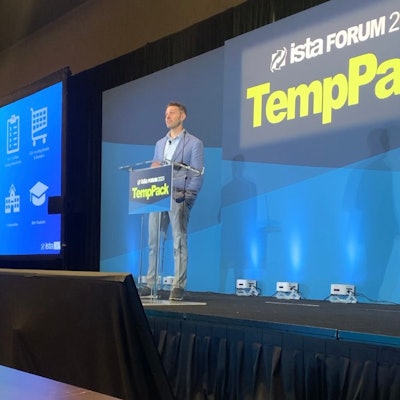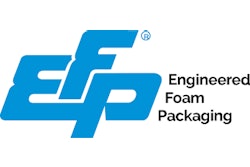The International Safe Transit Association (ISTA) conducts research to help businesses better understand, and prepare for, the hazards inherent in global supply chains. As A.J. Gruber, ISTA president and CEO, explained at the ISTA Forum’s TempPack this week in Houston, there are quite a few initiatives aimed at reducing damage in transit and optimizing resources through effective packaging design. Efforts include the following topic areas.
Undergrad and professional research: Over the past several years, ISTA has invested over $1.5 million into studying cold supply chain hazards—shock, drops, vibration, temperature, and humidity.
ISTA's research projects fall under three key areas: the Research Council, a research consortium with subjects that align with ISTA’s mission, and more recently, their educational foundation.
The latter, the ISTA Educational Foundation (ISTAEF), is a 501(C)3 charitable organization that supports undergraduate research grants. Grant recipient students presented their research at TransPack this week on crowdsourced logistics during the last mile, mapping grocery deliveries to the home, and optimized cushion design for minimizing product damage. Know a student looking to get involved? More info on the undergrad program is available here.
ISTA is continuing its data collection and analysis efforts, which include data on ocean freight. “We are partnering with IBM to take a look at the dynamics of shipping ocean containers. This came up in a conversation in the Pharma Committee meeting yesterday. Obviously, a lot of people are looking at shipping freight via ocean,” said Gruber, adding that IBM’s intelligence on shipping its high value products by ocean may offer some insights for pharma companies to adopt as well.
Guidance and tools: Gruber noted that the research conducted is most valuable when it offers practical information that people can use to help in design.
The ISTA Pharma Committee has been hard at work developing guidelines, with the soon-to-be-released PCG-04, Ambient Temperature Profile (ATP) Development document (Edited to add: Now released! Click here to download). As Merck’s Tiffany Paupst explained in her talk, the guideline includes using appropriately scoped and formatted data sets, defining hot and cold profiles (including through the area under the curve method), and making qualitative and quantitative profile adjustments.
Gruber added, “Beyond that, we have other tools that we’ve developed that I want to make everybody aware of: data collection standards and data analysis guidance. When we go out and perform research efforts, whether it's collecting shock data, vibration data, thermal data, etc., our research council has put together data collection standards. We're saying at a minimum, this is how we're going to go collect that data."
Plans are in the works to improve ISTA’s Standard 20, “and we have another process that was developed by what was our Sustainability Solutions Division, that's called Responsible Packaging by Design [RPbD]. It's a design guide with the process you should undertake to ensure you're taking into consideration everything you need to do in order to be responsible, sustainable with your design,” said Gruber. “That was actually built several years ago. Back at the time when it was built, it was from the mindset that eventually regulations were going to come to the packaging space, and you need to be prepared to show and document what you're doing from a design perspective to prove you're doing what you need to do… it was a little bit ahead of his time, I think, and as that conversation continues to grow, there is an effort currently underway to revise that and update it.”
The organization also recently published its ISTA 3L: Generalized E-commerce Retailer Fulfillment Test, a testing protocol that simulates the hazards experienced when product orders, fulfilled by retail corporations, are shipped directly to consumers.
Also new
- The PackSight platform helps with test planning and reporting. The tool is highly customizable and 14 new test blocks were added last year.
- Online and on-demand, the Distribution Environment Data Collection & Analysis courses are a collection of videos (approx. 3.5-4 hours' worth of content), which provide an in-depth discussion on the collection and analysis of shock and vibration data associated with the transport of products. The courses can be taken individually and in any order.
- The Principles of Cold Chain Packaging course will be, in essence, a pre-cursor to the popular "CC 201: Introduction to BioPharma Cold Chain" course that took place the day prior to the Forum this week. Topics will include latent and sensible heat, hazards in distribution, phase change materials, testing, and more.



























